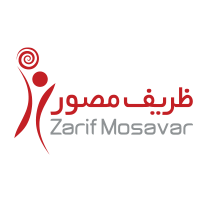Polypropylene fiber (PP)
PP fibers are polypropylene fibers produced by chain polymerization of propene monomer. Polypropylene fibers are hard, stable, and heat resistant. In addition, these fibers are antistatic, non-magnetic, and non-conductive. PP fibers have a long lifespan. These fibers can be used in a wide range from 0 to 100 degrees without problems. Since PP fiber is odorless and kind to the skin, it can be used without hesitation in the food, pharmaceutical, and cosmetic industries.
the product: ZarifMosavar staple fibers + catalog
Polypropylene fibers are superior to polyamide fibers in terms of elasticity and flexibility. These fibers have less abrasion resistance. PP fibers have good thermal insulation properties and are very resistant to acids, alkalis, and organic solvents. These fibers are sensitive to heat and light.
These raw fibers are most widely used in the construction and textile industries. They have special characteristics that make them an ideal supplement to achieve specific benefits when used for construction work, especially when added to concrete. These fibers are combined with cement mortar and increase the tensile strength of concrete significantly.
Know more : Polyester staple fibers (PSF), applications and advantages
What is polypropylene fiber made of?
Polypropylene (PP) is a thermoplastic “additive polymer” made from a combination of propylene monomers. Plastic parts are used in various applications, including packaging of consumer products, for various industries, including the automotive and textile industries.
By adding PP fibers to cement mortar, the weight or volume of the mortar does not increase or settle. These fibers are a good substitute for thermal rebars in concrete. We can add polypropylene fibers to concrete in various forms in the form of short and separated pieces.
PP fibers are also used for plastic strength. By adding it to plastic, it reduces plastic cracks due to impact or cracking caused by humidity and temperature changes.
Advantages and disadvantages of PP fibers (polypropylene staple fibers)
Advantages: Ability to absorb high energy in concrete, relatively high melting point, alkali resistance, non-magnetic, no dust absorption, high wear resistance, reasonable and cheap price
Disadvantages: Susceptibility to ultraviolet rays of sunlight is associated with correction and difficulty due to the polarity of its dyeing
Uses of polypropylene fibers
PP fibers are used to make ropes, fishing nets, BCF threads, carpets, artificial grass, concrete, upholstery fabrics, etc. They are also used for geotextile fabrics, pavement repair, roofing felt, and artificial ski slopes.
The price of polypropylene fibers
ZarifMosavar Group Producer of all kinds of synthetic fibers including Polyester fibers، Polypropylene fibers (PP fibers)، Polyamide and… To inquire about the price, please contact the number below.
Phone number : (031) 38350000 – Internal 824 / 825
| Product Specifications | the amount of | Unit of measurement | test |
|---|---|---|---|
| Length | 75±5 | mm | ISO 6989 |
| Fineness | 6±6% | Denier | ISO 1973 |
| Tenacity | min. 52 | gf / den | ISO 1973 |
| Elongation | max. 100 | % | ISO 1973 |
| Shrinkage | max. +6 | % | ASTM D4974 |
| Crimp Number | 20±5 | Waves / Decimeter | DIN 53840-1 |
| Humidity | max. 1 | % | ASTM D2257 |
| Oil Pick up | 0.25±0.05 | % | ASTM D2257 |
| Color | Raw White | Raw White | Raw White |
| Product Specifications | the amount of | Unit of measurement | test |
|---|---|---|---|
| Length | 12,18,51,64,75,90,100,110,130 ± 5% | mm | ISO 6989 |
| Oil Pick up | 0.2 ± 0.05 | % | ASTM D2257 |
| Tenacity | Min. 3 | gf / den | ISO 1973 |
| Elongation | 55 ± 15 | % | ISO 1973 |
| Fineness | 6 ±10% | Denier | ISO 1973 |
| Humidity | Max: 1 | % | ASTM D2257 |
| Shrinkage | Max. 5 | % | ASTM D4974 |
| Color | According to Sample | – | According to Sample |
| Product Specifications | the amount of | Unit of measurement | test |
|---|---|---|---|
| Length | 12,18,51,64,75,90,100,110,130 ± 5% | mm | ISO 6989 |
| Oil Pick up | 0.2 ± 0.05 | % | ASTM D2257 |
| Tenacity | Min. 30 | gf / den | ISO 1973 |
| Elongation | Max. 100 | % | ISO 1973 |
| Fineness | 15 ±10% | Denier | ISO 1973 |
| Humidity | Max: 1 | % | ASTM D2257 |
| Shrinkage | Max. 5 | % | ASTM D4974 |
| Color | According to Sample | – | According to Sample |
| Crimp Number | 23 ± 4 | Waves / Decimete | DIN 53840 – 1 |
| Product Specifications | the amount of | Unit of measurement | test |
|---|---|---|---|
| Length of Fibers | 6 ± 1.5,12 ± 1.5,18 ± 1.5 | mm | ISO 6989 |
| Extraction Oil | 0.5 ± 0.05 | % | PL-OPAO |
| Diameter | 35 ± 1.7 | Micron | Domestic Laboratory |
| Tearing Strength | Min: 30 ,Max. 40 | Centinewton / mm2 | ASTM D3822 |
| Elongation of Length | Max: 60 | % | ASTM D3822 |
| Humidity | Max: 1 | % | PL-MERO |
| External Particles | Without External Particles | – | According to Sample |
| Dispersion | Fully Dispersed in Water | – | Domestic Method |



